
You l
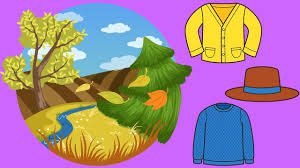
ook your best when you wear what’s in season. Especially if you live in a country with 5 seasons, you understand that with each change of season, your dressing process also changes. Each season has several sets of different styles depending on its climate. Keeping this in mind, you should change the way you dress according to each season and adapt to the changing clothes you wear. Different seasons have different altitudes and climatic conditions.
With that in mind, buy clothes online that you need to wear separately so they keep you comfortable all year round.
Every season you also have the opportunity to recycle or renovate your wardrobe. Every season or every occasion you need a different type of clothing. Different seasons can also help you try on different clothes and help you decide your own style. Now, when it comes to deciding your style, you have to consider a lot of things that will help you decide and stand out.
Summer and winter are two seasons when the temperature is too high. At this time, clothes can not only play the role of appreciation, but also help you survive the severe cold or scorching heat.
The selection of appropriate supplies and materials is of the highest quality and should be in keeping with the season. Do not turn to high-end coats and tweeds, mohair or cashmere for the winter, they will certainly protect you from the cold. To continue having a style nowadays, accessories will be your most precious partner because you will have the power to transform the look with shawls, hats, mittens and handbags.
Throughout the summer, it will be more comfortable to wear a stylish look with a little flowing and well-tailored dress, or light denim shorts. There’s no need to be overly generous, but accessorizing with tow charms is enough to look confident.
Season and
Clothing As mentioned above, it is necessary to dress according to the weather or the season because it will not only protect you from the weather but also give your wardrobe a new look. At Idalia you will find clothes for every season for your holiday and office looks. Get kurta suits online at Idalia, an online portal for all types of modern ethnic clothing.
There are five seasons, so you have to dress, and for that you have to dress.
Now let’s talk about clothing according to the following five seasons:
1. Summer: Summer is the time of the sun. This is the busiest time of the year. Light and adapted clothes are preferable in summer.
As the heat heats up, summer will be the season to hit the beach or the nearby pool in these two swimsuits. In the summer, you’re sure to see casual tank tops, lightweight sweaters, shorts, bright tees, and slippers. It’s a single season that doesn’t require diapers. Find classic women’s suits, summer dresses, pair them with your favorite loafers, go the extra mile and follow the trends. Summer dresses never go out of style.
2. Spring: Spring comes at the same time, the climate is hot and rainy. It is still very cold in early spring, because early spring is winter. Coats, sweaters and shawls can be very useful when preparing for the start of spring. As spring approaches, you can ditch your warm clothes for more modest coats and long-sleeved blouses.
Spring is the season to support wearing bright, vibrant colors. It is the season of rebirth, as the flowers bloom. So feel free to express yourself with fun and colorful attributes.
3. Winter: Winter is the coldest time of the year.
In winter, be sure to wear warm clothes to avoid winter frostbite. Wear cozy coats, jackets and sweaters to stay warm. Scarves, gloves, stockings, hats and earmuffs can also be used to add more winter minions for added warmth. Wear layers of clothing, as weather protection is important.
4.
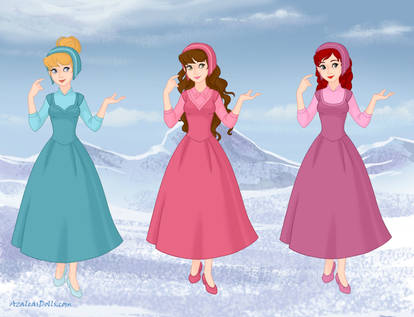
Fall: When it comes to dressing for the fall semester, layers are important. Fall is the season of browns, oranges, and all kinds of pastel, comforting colors. Jackets, ponchos and overcoats are particularly popular during this period called autumn. Incorporate multiple versatile shapes and layers for a contemporary look. Boots are the shoe type of choice, especially in the fall.
5. Rain: The fifth season is the rainy season. In the rainy season, people prefer to wear clothes that are not too excessive and comfortable. For this season, one can choose clothes that are not long but at the same time suitable for the occasion and the outfit. Especially on rainy days when you have to go out, it is better to wear knee-length or ankle-length clothes, which are recommended by all stylists.
The above are the best ways to categorize what to wear all year round. It is always advisable to plan your outfits in advance so that you do not have to look for them at the last minute. When it comes to traditional seasonal clothing, Idalia offers a great selection of clothes to keep you comfortable and stylish at all times. During rainy seasons and festivals, the kurta with skirts on our online portal is the best choice for you.
Conclusion
It’s always amazing to experience the seasons, and it’s even more fun to dress according to the respective season.
At Idalia you can find a wide range of kurtas with wide pants and choose the style that best suits your daily commute to work and celebrations. All of our designers always keep all their customers’ wishes in mind and design all those clothes that will make everyone stand out and stay fashionable at all times. The seasons change, but you will always wear and can wear the great selection of clothes we have prepared for you. All these outfits available on our online portal are designed in different sizes and colors, and you can keep them for everyday life, parties and family gatherings.
With the type of weather in mind, now with Idalia you can easily store all types of clothes in your wardrobe.
You can also gift our clothes to your female friends and colleagues and brighten up their day with our great collection of clothes. Fancy a wardrobe makeover? Idalia is perfect

for you. In addition to ethnic clothing, we also have western clothing suitable for your outings and travel plans. Our patterns and prints are unique and y’t find them anywhere else.
All of our garments are made from durable, high quality materials. We wish you the best possible meeting with us and we hope to see you soon. Take care
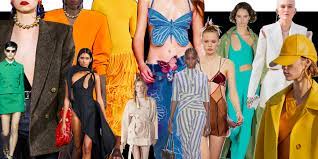
Garments Quality Check Points and Their Quality Control
Garments QC/QA Check Points: There are four sections During the quality control process of the garment, it creates defects during the manufacturing process, part cutting, sewing, washing and finishing, there must be standards for the quality control team to check the product quality of the garment. This article clearly shows the quality control standards of each quality control point in the garment factory and briefly describes the quality requirements of garments. I hope after reading this article, you will have a good understanding of garment quality checkpoints and their quality control.
Garment quality checkpoint by department
1. Cutting quality checkpoint
2. Sewing quality checkpoint
3. Washing quality checkpoint
4. Checkpoint
Finishing Quality Checkpoint Garment Quality Checkpoint and its
Inspection Standard is better for you to better understand the job descriptions of different garment quality control departments.
Manufacturing Quality Checkpoint
1. Fabric inside out: Make sure the fabric is not inside out.
2. Fabric slope: The maximum slope of 2 cm for a 60 cm bust is acceptable and cannot be exceeded. This defect can be corrected by repairing the fabric at the fabric factory.
3. Relaxation: Knitted and stretch fabrics should be relaxed for approximately 12-24 hours or more before cutting, depending on the type of fabric. The stretchy fabric should relax.
4. Pile Height: The higher the pile is on the head, the more likely it is that the size of the chips will be uneven.
This can cause sizing and fit issues. Make sure the height is appropriate for the type of fabric (usually 2 to 3 inches, never more than 5 inches).
5. Numbering and grouping: Make sure that the different pieces are numbered correctly to avoid shadows and that the numbering can be easily removed after the sewing is finished.
6.
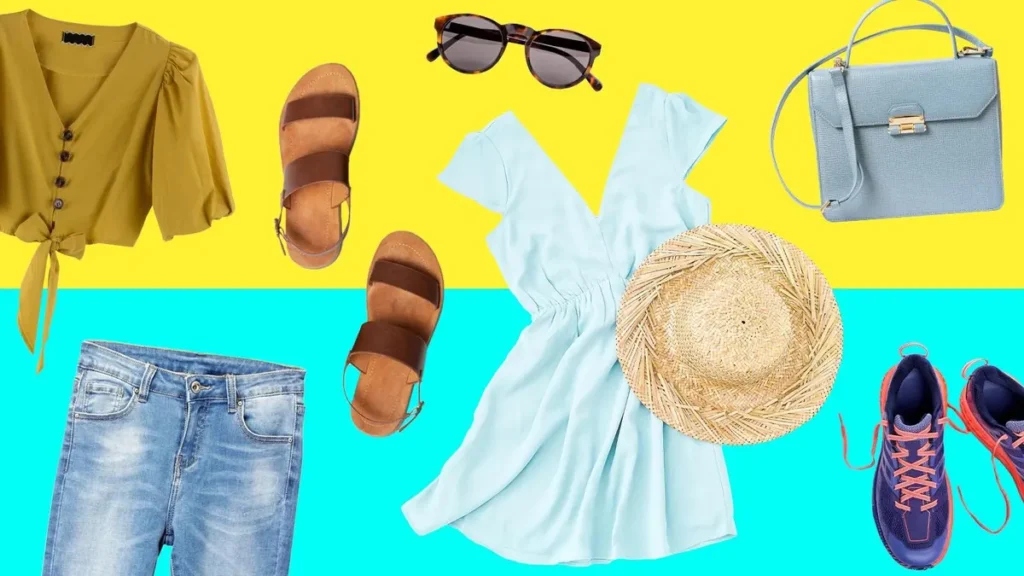
Storage: Make sure that the various parts are stored correctly, as rolled up and not folded.
Sewing process quality inspection points
1. Key operations: repeatedly check all key operations (such as sewing necklines, armholes, cuffs, closures, etc.), so that the operator clearly knows what needs to be done and how to do it. Repairs before finishing a lot of clothes.
2.
Labels must be applied correctly to 100% of garment size
3. Check interfacing for adhesion strength when melting.
4. Seam Allowance: Check operators again at this point to ensure they are using the correct seam allowance.
5.
Numbering: Make sure the person sewing puts together the same numbered pieces to avoid shadows.
6. Confirm whether the garment structure and size are correct according to the batch sample.
Water Washing Process Quality Checkpoint
1. Washing method: ordinary water washing, stone washing, sand washing, enzyme washing.
2. Bleaching method: stone bleaching, bleaching of clothes
3. Any special process. For example.
Repaint after washing
4. Shade of blue thread
5. Whiteness of white thread
6. Final tone: bluish or yellowish
7. Friction effect: contrast of blue thread and white thread
8 .
Smooth blue and white parts
9. Hand feel
10. Record seal sample identification and quality standard on final inspection report to ensure QC inspects lot to standard correct.
11. Mark and sign all quality standards as an indication of proper quality control.
12. If QC finds the following major defects, it will not be released.
13. Color of approved tape
14. Fabric defects and wax marks in areas of garment above the knee exceeding 1 inch
15.
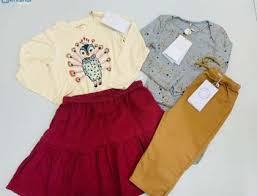
abric defects and wax marks greater than 3″ on any part of the garment
Finishing process quality check points
1. Button fasteners and buttons
2. Printing
3. Complete inspection of the quality of garment
4. Packaging and cartoning
Button fasteners Buttons
Button too loose/too tight
Button does not close properly/damaged
Button lacks plastic seal
Button falls off
Not enough dust to secure the button
Marks on mold
Damaged paint
Rust on button
Text not straight
● Wrong position/no line/wrong spacing
● Button missing when needed
● Buttonhole too big or too small
● Buttonhole not clean/wrong sewn/deformed/poor thread quality
● Spare button missing or misplaced
check print
● shiny marker
● not printed or printed incorrectly
● must be ironed Avoid ez to fold the pigment-dyed fabrics until they are completely washed.
Indeed, it leaves clearly visible marks on clothes after washing. After sewing, hang the garment on a hanger until washing begins.
Garment quality control
Garment inspection for manufacturing defects
Garment 100% measured to ensure fit
Heat seal peeling
Garment final product confirmation quality control
Garment quality control packaging and carton quality and folding
● Correct selection of cartons according to customer requirements
● Inspection of packaging, sealing, binding and barcode
Final inspection quality control point
After the cartons are finished, Garment Buyer QC performs a final quality inspection to assess the quality of the product. Final audit or inspection is the most important factor for a garment factory. The final audit is the final judgment on the quality of the buyer’s product, and the inspection calibrates the quality control of the entire garment factory.
Garments cannot be shipped without final inspection. The final inspection report is the garment buyer’s proof of quality, a certificate issued by the factory on the quality of its final product, authorizing or denying shipment of the garment. There are specific quality control points for the final examination of the garment and I have listed them below.
Quality inspection criteria for final review
1. Workmanship
2.
Appearance
3. Dimensions/Accessories
4. Materials
5. Accessories
6. Finishes/Packaging
7.

Manufacturing
Fusion
Splits
Broken needles
Missing/skipping stitches
Repair
Edged seams
Incorrect SPI
Damaged/cut/punched needle
Stripping 44/T4P4 Trapped or up-down
Misaligned/unsecured button
Bent stitches
Edges Rough
Loose/Knotted
Buttonholes
Improper Tension
Open/Bent Main Tab
Lo44 4 Cut Lines
Lo44 4 Stitches Loose/Uncut Threads
Dirty Marks
Oil Stains
Wet Clothes
Tears
Purple
Shiny
4 Ply 4T 444 Covering 4 Stitches 4 4 Size 4 Size 4 Contrast Fabrics
Printing/Paint Errors
Color Differences
Bare Stitches
Holes or Cuts
Yarns
Slubs
Color Fly/Exotic Yarns
Accessories 4 L4/4 Yarns Main threads
Motors 4 /44 4 444 Zippers
Tapping/Sealing
Screen printing/Boridery
Buttons/Pressures/Knaels
Velcro
Link s Elas
Finishing/Packaging
Assortment
Assortment
Assortment
4 tickets ● 4 tickets ● 4 tickets ● 4 tickets ● 4 tickets ● 4 tickets 4 bar codes. Cardboard Barcode
Illustration and graphic design: what’s the difference?
Art and design evolve much faster than we can imagine. Both are becoming increasingly accessible, making it difficult to confuse specific media.
Well, for example, look at illustration and graphic design.
Can you tell the two apart on a whim?
To them the two are more or less the same thing. Indeed, it is easy to confuse illustration with graphic design, as the two mediums are closely related to art forms. It’s no surprise that many 20th century artists shuttled between the creative fields of illustration and graphic design.
So what differentiates them from each other?
This is the subject of this article.
We take a closer look at the differences between illustration and motion graphics. let’s start!
What is illustration?
Illustrations explain an idea or tell a story or provide decoration by visually representing and interpreting text.
This can be done manually or digitally – some software is involved.
Drawing is one of the most widely used styles of illustration.
Whether it’s a pencil drawing, a watercolor or even a charcoal drawing, you’ll find illustrations in most magazines, books, posters, manuals and pamphlets.
In a world where everything is going digital, illustrations are created by hand and vector graphics. In this case, it is always created by hand directly on the computer.
At Breadnbeyond Studios, our illustrators rely primarily on Adobe Illustration for their work to help our clients’ video marketing campaigns. This software helps illustrators to create very clean and scalable graphics.
Since an illustration is a visual interpretation of a text, special attention must be paid to details such as the facial expressions of the characters in order to evoke deep emotion and connection.
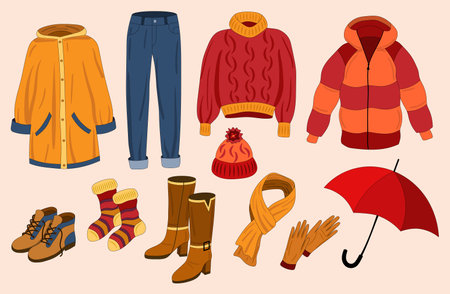
What is graphics?
Graphic design is a more widely known type of design.
It has a lot to do with composing and arranging the layout of text and images.
So, while illustration is a creative visual interpretation, graphic design focuses on communicating with the target audience.
Graphic design is essentially an art with a purpose – you could say it’s also about visually solving problems. He combines art and technology to convey ideas through images.
Graphic design representing a particular idea or identity for use in advertising and promotion.
So if you want to communicate a product or concept visually, you will use graphics to communicate your message.
major studios, the most common software used to create designs for this industry is Adobe InDesign.
Graphic design work areas such as branding, packaging, publishing, advertising and digital design using text, illustrations, symbols, photography, textures and colors.
Illustrators vs. Graphic Designer
Now that we have understood the basic concepts of illustration and graphic design, we now move on to the professions that involve them: illustrators and graphic designers.
There are key differences between graphic design and illustration roles, and I’ll let you know what types of projects graphic designers and illustrators work on.
so you can decide which career path is right for you!
Graphic Designers Graphic designers mainly work on many marketing and promotional materials such as layout, text, typography, images, illustrations and other graphic elements to make a polished production.
It is more focused on creating a logo, creating marketing materials and branding. They primarily serve businesses for marketing or advertising purposes – the ultimate goal is to increase sales of a product and build brand awareness.
Most of the times, graphic design jobs involve creating advertising materials in the form of posters, flyers, business cards, logos, email marketing, etc.
Although sometimes they also do illustrators and Photoshop. But their main focus will be InDesign.
The Internet also offers graphic designers a great opportunity to increase brand awareness through digital channels. By becoming user interface and user experience (UI/UX) designers, they can now create richer interactions between users, applications and games.
Graphic designers always keep in mind that their job is to design and deliver a brand message.
Illustrator
An illustrator, on the other hand, is someone who draws more. They enjoy conceptualizing and building on our art, ideas and themes.
Unlike graphic designers who don’t necessarily know how to draw, their work comes from an original place because they are the original designers.
Illustrators Create original hand-drawn or digital artwork (using a Wacom tablet, Cintiq, iPad or other device).
It can convey an emotion or represent a current trend. Whether you want to deny it or not, illustrators need drawing skills.
Illustrators may create commercial work for a company’s advertising projects – for example, designing product packaging. But they can also be good artists.
They make things like magazine pages; they also do a lot of illustrations for book covers, graphic novels and infographics.
That being said, there are still a lot of transitions between illustration and graphics. Many designers dabble in both.
Video summarizing all the points above:
Here’s a quick overview of illustration and graphic design. The two fields are closely related and often intertwined.
Let’s put it this way: if you see an ad with a photo, logo, and eye-catching text, that’s graphic design, and if you see illustrations or sketches, that’s illustration.
Now the question is: can one be more important than the other?
Graphic designers are not more important than illustrators and vice versa. Both areas have their own unique functions and areas – if done well, they can still successfully convey an idea or message.
So which job suits you best, illustrator or graphic designer?
Do you have any other interesting facts about illustration or design graphics that you would like to share with our readers?
Let us know in the comments below!
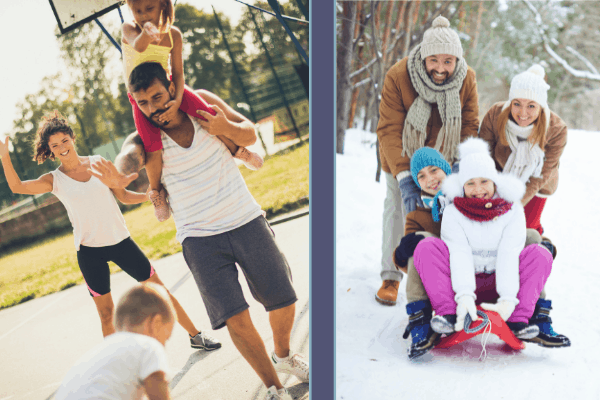

What is mode communication?
Fashion Communication is one of the newest and emerging fields in the fashion industry. Fashion is the fastest growing sector these days and many Indian brands are competing with international brands.
This opens up huge possibilities for fashion communication designers, dealing with design strategy, branding, portfolios and more.
He/she will also work in areas such as visual merchandising, styling, graphic design, display and exhibit design, advertising, public relations and
fashion communication graduate students who will have a high level of skills and domain knowledge and will become a professional in providing effective communication solutions for the fashion and lifestyle industry.
What is the
range?

Students will develop an understanding of the design process and how to apply a human-centered approach to problem solving. The best mix of traditional and new design skills are presented alongside topics such as the history of design and the creative process. Course
covers areas such as graphic design, visual merchandising/retail experience design, exhibition and display design, event management, photography, styling, advertising, public relations and creative writing specific to the fashion and lifestyle industries.
A good course in communication studies will expose you to web and multimedia design, computer graphics, illustration, product design, exhibit design, visualization and art direction, typography and photography.
What are the career options?
Fashion Communication students become dynamic professionals skilled in providing the most effective and economically viable communication solutions to the fashion and lifestyle industries. Covering a variety of opportunities in marketing, advertising, public relations and journalism, fashion communications has long been considered one of the industry’s untapped career resources.
The Impact of the Internet on Reading and Writing Skills
Students in this subject area study illustration, packaging, computer graphics, photography, and fashion event planning and production.
What are the job responsibilities?
● Fashion Stylist
● Graphic Designer

● Fashion Journalist
● Teacher
● Design Assistant
● Fashion Assistant
● Fashion Marketing Manager
● Fashion Editor
● Fashion Photographer
● Art Director

Get more Fashion information Redeem, you can Click here.
List of companies employing these professionals:
● Pantaloon
● Shopper’s Stop
● Marks & Spencers
● Christian Dior
● Lifestyle
● Benetton
● Liberty
● Freelook

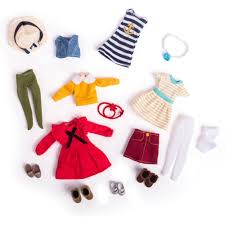
44 ●
Asia ● 444 of dia ●s 4,444 Times ● Femina
● MTV
Who can take this course?
● Candidates who pass 10+2 in any subject can study fashion communication at bachelor level.
● Applicants with a bachelor’s degree in fashion communication are eligible to pursue master’s and doctoral studies in fashion communication in Indian and overseas universities.
Top Colleges/Universities in India for Fashion Communication:
● National Institute of Fashion Technology, Bangalore
● National Institute of Fashion Technology, New Delhi

● National Institute of Fashion Technology, Mumbai
● National Institute of Fashion Technology, Chennai
● National Institute of Fashion Technology, Chennai
● Symbiosis Design Institute
Available Top foreign colleges/universities for fashion exchange:
Central Saint Martins, London
Parsons School of Design, New York

Bunka Fashion Institute/Bunka Women’s University, Tokyo
Fashion Institute of Technology, New York
Ecole De La Chambre Syndicale, Paris
Before we dive into the 8 types of graphic design, let’s start with the basics:
What is graphic design? Graphic design is about creating visual compositions, solving problems, and communicating ideas through typography, imagery, color, and form. There’s no one way to do it, which is why there are several types of graphic design, each with their own area of expertise.
Although they often overlap, each type of graphic design requires specific design skills and techniques. Many designers focus on a single type, others focus on a group of related and similar types.
But because the industry is constantly changing, designers need to be adaptable and lifelong learners so they can change or add specializations throughout their careers.
Whether you’re an aspiring designer or looking for design services for your business, knowing the 8 types of graphic design will help you find the right skills for the job.





